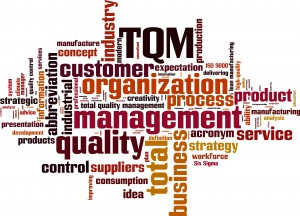
 Data Structure
Data Structure Networking
Networking RDBMS
RDBMS Operating System
Operating System Java
Java MS Excel
MS Excel iOS
iOS HTML
HTML CSS
CSS Android
Android Python
Python C Programming
C Programming C++
C++ C#
C# MongoDB
MongoDB MySQL
MySQL Javascript
Javascript PHP
PHP
- Selected Reading
- UPSC IAS Exams Notes
- Developer's Best Practices
- Questions and Answers
- Effective Resume Writing
- HR Interview Questions
- Computer Glossary
- Who is Who
The Number Game Behind: ISO 9000 Series
Often we read that a company is an ISO 9001:2000 certified. Some say they are ISO 9001:2008 certified. Even nowadays, we are watching the companies writing the statement, ISO 9001:2015 certified. After reading these tag lines, it is easy to assume that, ISO 9001 remains the same but the number after that keeps on changing. So, what does this changing numbers after the colons denote in ISO 9000 series?
The answer to this question is, that these are the different versions of the standard and the year in which the version is released is mentioned after the standard number, i.e. ISO 9001 is the name of the standard and the year (2000, 2008, 2015 etc) mentioned after the colon, is the year of the release of the corresponding version of the standard. Another thought which immediately comes to the mind is when the standard or the guidelines were fixed then why there is a need of changing it.

With the evolution of new ideas and technology, the world is moving towards a new era where the deployment of the work is done in absolutely new and smart way. The old methods have become obsolete. Change is the key to progress now.
Progress is impossible without change, and those who cannot change their minds cannot change anything. – George Bernard Shaw
Going with the above philosophy, changes are required in the standard guidelines in order to meet the new innovative ideas and technologies. The same is been implemented by International Organisation for Standardisation (ISO) as well. ISO reviews all the standards in every five years in order to meet the aspiration of the changing industry and checks if a revision is required on the standard to keep it up-to-date and relevant for the industry.
People Responsible for the Change

A technical committee(TC) is a bunch consisting of representation from the industry, governments and other stakeholders. ISO has more than 250 technical committees. Each TCs handles different verticals (For eg : Information Technology, Steel, Food products, Fire safety, Leather, Packaging material, Air quality, Water quality, Jewellery, Waste management, Energy Management and much more).
Each TC has several recognized members from the same domain. These ISO members are part of recognized and renown national standard bodies from across the world. There is only one member from one country.
Individuals and companies cannot be part of technical committee. Some of the members are BIS(India), SAC(China), SA(Australia), ANSI(united States), BSI(UK), SCC(Canada), DIN(Germany), ABNT(Brazil), JISC(Japan), AFNOR(France) and many.
Steps Taken in Each Review
The process of reviewing these standards should go through a systemized procedure. The change in the version is not implemented overnight and undergoes a complete review process. There are several steps in this process and every standard move through these steps.
- The new proposal is submitted to the technical committee using form 4, which requires a vote from all the members of the committee. For the purpose of the vote, the electronic balloting system is used.
- Once the proposal is accepted by the technical committee, it has to be passed to the working group of experts for starting the discussion in order to prepare a working draft. This discussion is done for pros and cons related to optimization of better implementation in the industry.
- Once the working draft is ready; it is being shared with the technical committee along with ISO CS (Central Secretariat).
- Once the working draft reached the consensus by the technical committee, the working draft is introduced to all the ISO national members for their comments.
- After reaching the consensus from the ISO national members, the final draft sent to all ISO members, where the voting is done amongst them.
- Once the final draft is approved by member votes, it becomes the ISO INTERNATIONAL STANDARD, with a new version.
- Every standard is given a defined time period for the purpose of transition to all the organizations who are acquiring the same.
More than 75% of ISO members are from the developing countries, hence the problems and issues specific to the implementation of the standard in the developing countries are in consideration. The knowledge and the expertise revealed in International Standards help these countries realize their potential.
In its latest revision released in 2015, ISO 9001 is once again adapting to the updated technology and is focussing on adaptability. The new revision of the standard allows to integrate ISO 9000 with other ISO standards with an ease. The defined high-level structure of the new revision helps in quick implementation of multiple standards in a single Organization.

